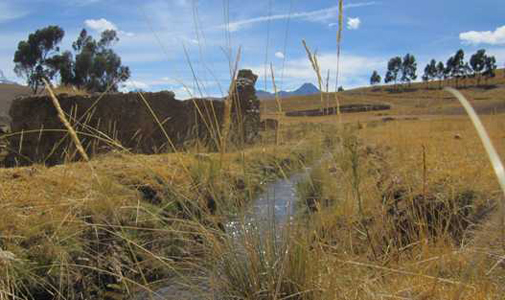Mattias Borg
October 2010
After 5 months in the field, pieces of the puzzle are beginning to find their place. I set out my fieldwork from the small village Huancapampa, just across the Rio Santa from the provincial capital Recuay. Huancapampa is situated where the smaller river Atoq Huacanca - ‘the fox that cried' - meets Rio Santa, and the idea has been to track the watershed backwards in order to explore how the watershed is shared, the landscape engineered and the water managed.
Right now I am focusing on a specific irrigation canal, Querococha 3 Bases, which supposedly takes water from the Querococha Lagoon and distributes it to the three different communities of Yanahuanca, Ocopampa and Pocrac. In its course, the canal traverses territories of various actors: the Huascarán National Park, the Comunidad Campesina Catac, where the inhabitants are not allowed to use the water for other purpose than consumption, and Yanahuanca, which is part of the Comunidad Campesina Los Andes de Recuay. In the Yanahuanca sector, the canal bifurcates and reaches the villages Pocrac and Ocopampa. The problem that emerges is that an unfortunate combination of a history of mismanagement and diverging interests along its course creates a socially induced water shortage. During my period of field work water has reached none of the three bases, and people in the different villages are looking for other ways of achieving access to water. For, as they say, ‘agua es vida‘. Water is life.
Looking at water, one is invariably looking at climate change. And climate change is everywhere in the Andes. People in the Upper Rio Santa watershed are living of the land, relying on rainfall, underground water resources and glacial meltwater. In the next phase of the fieldwork until Christmas I will be focusing on how the canal has been historically constituted, and further explore the relationship between the users of the three bases and the different levels of state management of the irrigation systems. And through this process I am hoping to reach a deeper understanding of the entanglement of climate change and local level water management.

